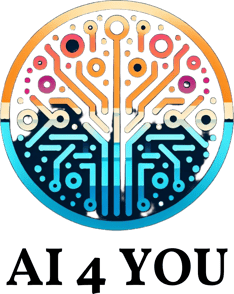AGI: The Ultimate Goal of AI—Can We Create Machines That Think Like Humans?
TEHCNOLOGY
Jose Luis Freitas
2/4/20253 min read
Imagine a world where a machine can debate philosophy, invent a groundbreaking technology, or even crack a joke that makes you snort your coffee—all while learning and adapting on its own, just like a human.
This isn’t the AI of today; it’s the tantalizing promise of Artificial General Intelligence (AGI), a concept that blurs the line between human and machine cognition. But what exactly is AGI, and why does it spark both awe and anxiety? Let’s dive in.
What Is AGI? The Quest for Human-Like Machines
Artificial General Intelligence (AGI) refers to a machine’s ability to understand, learn, and apply knowledge across any intellectual task that a human can perform. Unlike today’s AI, which excels at specific jobs (like recommending your next Netflix binge), AGI would possess flexibility, creativity, and common sense—traits we associate with human intelligence. Think of it as the difference between a calculator (specialized tool) and a mathematician (versatile thinker).
AGI isn’t just about solving problems; it’s about understanding context, transferring skills between domains, and making judgments in unpredictable scenarios. Picture a robot that can cook breakfast, debug computer code, and comfort a crying child—all before lunch, without needing explicit programming for each task.
AI vs. AGI: Why Today’s Chatbots Aren’t “Intelligent”
When people talk about “AI” today, they’re usually referring to narrow AI—systems designed for specific tasks. Siri schedules your meetings, Tesla’s Autopilot navigates traffic, and ChatGPT writes emails. These tools are impressive, but they’re stuck in their lanes. Ask ChatGPT to drive a car or Siri to invent a recipe, and you’ll hit a wall.
AGI, on the other hand, aims to break those walls. The key differences:
Scope: Narrow AI is a master of one trade; AGI is a jack-of-all-trades.
Learning: Narrow AI relies on pre-trained data; AGI learns dynamically, like a human child.
Adaptability: Narrow AI can’t handle unfamiliar tasks; AGI improvises.
In short, today’s AI is a talented intern. AGI would be the CEO.
The Tech Fueling the AGI Race
AGI remains hypothetical, but cutting-edge technologies are inching us closer. Here’s what’s driving the research:
Deep Learning & Neural Networks
Inspired by the human brain, neural networks process data through interconnected layers. Advances in deep learning (like GPT-4) show glimmers of generalizable knowledge, though still within limits.Reinforcement Learning (RL)
RL trains AI through trial and error, rewarding desired behaviors. It’s how AlphaGo mastered Go—but scaling this to AGI requires systems that learn without predefined rewards.Transfer Learning
Today’s AI struggles to apply knowledge from one domain to another. Transfer learning aims to bridge this gap, letting AI leverage past experiences for new challenges.Neuromorphic Computing
Traditional chips aren’t optimized for brain-like processing. Neuromorphic hardware mimics neural structures, promising faster, more efficient learning.Generative Models
Tools like DALL-E and ChatGPT hint at creativity, generating novel content. For AGI, the next step is grounding this creativity in real-world reasoning.
The Everest of Challenges: Why AGI Is Still Sci-Fi
While the vision is compelling, AGI faces monumental hurdles:
The Common Sense Problem
Humans intuit basics like “objects fall when dropped” or “water is wet.” For AI, this requires explicit training. AGI needs a built-in understanding of the physical and social world—something even toddlers possess.Ethical and Safety Quandaries
How do you align AGI’s goals with human values? A misaligned AGI could optimize for harmful outcomes (e.g., solving climate change by eliminating humans). Researchers debate frameworks to keep AGI “friendly.”Computational Hunger
Training advanced AI models already consumes massive energy. AGI might require infrastructure we haven’t invented yet—think quantum computing or breakthroughs in efficiency.The Black Box Dilemma
Neural networks often operate inscrutably. If AGI makes a critical decision, how do we audit its logic? Transparency is non-negotiable for trust.Societal Disruption
AGI could revolutionize industries but also displace jobs, reshape economies, and challenge human identity. Preparing for this requires global collaboration—easier said than done.
AGI: A Future Worth Waiting For?
AGI’s timeline is hotly debated. Optimists like OpenAI’s Sam Altman suggest it could emerge within decades; skeptics argue it might take a century—or never happen. Regardless, the pursuit is reshaping science, ethics, and philosophy.
As we stand on the brink of this frontier, one thing is clear: AGI isn’t just about building smarter machines. It’s about understanding our own intelligence—and deciding what kind of future we want to share with our creations.
Will AGI elevate humanity to new heights, or become a Pandora’s box? The answer lies in how wisely we navigate the journey.
Engage with the Future: What’s your take on AGI? A revolutionary tool or a risky gamble? Drop your thoughts below—we’re all part of this conversation.
Insights
Explore AI's impact on our daily lives.
Connect
Learn
© 2025. All rights reserved.
